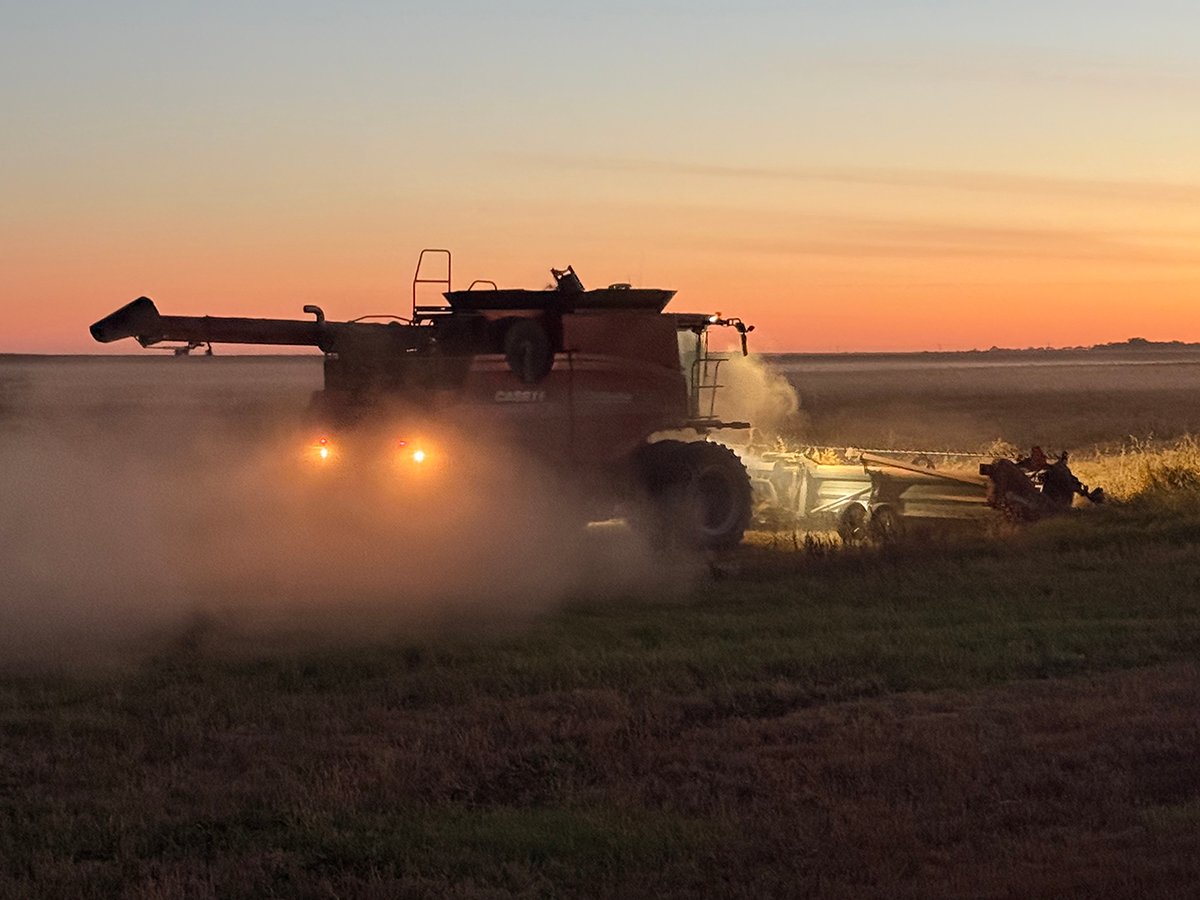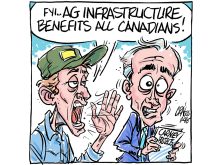THE FEDERAL government was on the horns of a dilemma in deciding what to do about the country’s ailing hog sector.
If it stepped in with aid, it risked adding fuel to the already boiling cauldron of discontent in the United States, where producers threatened trade challenges if Canada helped its hog producers.
If Ottawa did nothing and let market forces work along the current trajectory, it risked the collapse of significant parts of the Canadian industry.
Last week, the government decided on the former. The aid plan for the pork industry is a combination of money to boost marketing efforts, government-secured loans to help producers stay in business and a fund to help producers who want out of the business.
Read Also

Downturn in grain farm economics threatens to be long term
We might look back at this fall as the turning point in grain farm economics — the point where making money became really difficult.
The initiative is a reasonable attempt to help an industry that has faced extraordinary difficulties in recent years.
A higher Canadian dollar and high feed prices have hit producers hard, driving up costs while making their products less attractive to foreign buyers.
As well, American country-of-origin labelling regulations have made Canadian pork less attractive to U.S. meat packers.
Added to that is the H1N1 flu virus scare, widely referred to as swine flu, which generated negative consumer perception toward pork, even though health agencies said there was no link between pork and the spread of the virus.
According to the Canadian Federation of Agriculture, which quoted Statistics Canada, live hog exports in June 2009 were 34.1 percent lower than in June 2008.
For the first six months of 2009, live animal exports were worth $402 million less than the same period in 2008.
The government had little choice but to try to stem the losses.
The $17 million pork marketing fund for market research and promotion should help build stronger relationships with buyers and find new ways to improve access for Canadian hogs.
The government-backed long-term loans will provide a hand up to operations with sound business plans trying to weather the present storm, if such can be found in the battle ridden industry.
There is also $75 million to help producers who want out and who recognize that losses are unavoidable.
The money may ease the transition as these producers seek other opportunities.
The plan is a decent beginning, but much work remains. Producers and governments must prepare to stand by their plan in the face of U.S. opposition.
The National Pork Producers Council in the U.S. has asked its government for financial assistance, as well as support through additional purchases through food programs.
The council apparently fails to see the irony in that position, while at the same time condemning aid for Canadian producers.
The Canadian government had little choice but to adopt a damn the torpedoes approach on pork industry aid even though it is likely to draw retaliation.
To do otherwise risked the meltdown of the industry within our own borders and averting that calamity must be the prime concern.
Bruce Dyck, Terry Fries, Barb Glen, D’Arce McMillan and Ken Zacharias collaborate in the writing of Western Producer editorials.
















